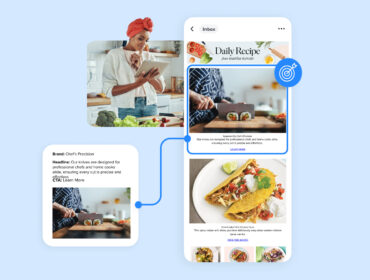Consumer behaviors, email newsletters, and subscription fatigue with Mark Stenberg
A famous Chinese proverb states, “The best time to plant a tree was 20 years ago. The second best time is now.”
Mark Stenberg, senior media reporter at Adweek, believes this applies to publishers who are just getting started with email.
“Wherever you are with your newsletter strategy, the best thing that you can do is whatever you have the capacity to do at that moment,” he says. “I’ve worked with publishers who are just getting their product off the ground, but they’re building an editorial strategy around [email]. If that’s the resource level that you’re at, build from there.”
We caught up with Stenberg to get his insights on the growth of email newsletters, threats of subscription fatigue, and the key to driving audience engagement.
To start, email has become a much-needed antidote to publishers’ social media woes.
“For all the benefits that social media brings to the news world, it’s also somewhat of an unreliable medium in terms of communicating messages to an audience on a consistent cadence,” Stenberg says. “Newsletters serve this really valuable purpose of essentially ensuring that information reaches the recipient, which is something that we’ve lost with the algorithm.”
Email also helps publishers become a part of their readers’ routines again — like they were in the days of primarily print publications.
“Newsletters bring back this idea that you can control when you’re getting information and you can build a news consumption routine around those rhythms,” Stenberg says. “That kind of reliability and consistency is definitely something that newsletters have brought that we lacked out on the open web.”
What do you say to those who believe subscription fatigue is bound to happen?
Murmurs of newsletter subscription fatigue have been buzzing around for years now. But email has only continued to flourish. As Stenberg says, “Companies that are email-first are seeing a lot of success from the popularity of the platform.”
And when it comes down to it, email is susceptible to the same kind of fatigue as any other media channel.
“What you’re trying to do if you’re an email operator is be one of those five or 10 or 20 newsletters that this person has agreed to subscribe to,” Stenberg adds. “I don’t think that newsletter fatigue or subscription fatigue is as pressing of a concern as we might have thought a few years ago.”
What do you see as the key components to building an audience, driving engagement, and encouraging retention?
According to Stenberg, the biggest components of audience growth and retention are:
- Having an original, distinctive voice
- Delivering high-quality, valuable information
- Establishing a consistent cadence
“Try to be in that person’s inbox at the time that you promise to be in that inbox, day in and day out, or week in and week out,” Stenberg says. “If people are counting on a newsletter to arrive and it doesn’t arrive, that erodes really critical trust.”
Email will play an important role in a cookieless world because it’s generally more trustworthy and transparent than cookie-driven channels. As an opt-in channel, email is also a rich source of audience data.
“When somebody says, ‘Here is my email address, please continue to send me this kind of content,’ they are already telling you what they’re interested in from the get go,” Stenberg says. “And then with their actions via email, you’re getting even more insights into the crème de la crème of their interests.”
Stenberg has seen big publishers with a lot of resources take a cross-departmental approach to email, looping in editorial, audience, strategy, and ads teams.
“A lot of publishers are really starting to consider email and newsletters like their [front page],” Stenberg says. “If you can get as much utility out of every ounce of copy that you put into that newsletter, I think it pays dividends in the long run.”
Meanwhile, he believes publishers just getting started with email should treat it as their minimum viable product or MVP: the most affordable, digestible thing you can create to prove your concept without breaking the bank. So you can test, iterate, and gather data while you build your bigger, end-game product.
“You can start with an email newsletter and figure out what people want,” Stenberg says.”Companies have built media empires on the backs of email. It’s a wonderful building block.” Just look at publishers like Morning Brew and Axios, which now run suites of revenue-generating newsletters.
What’s an overrated trend in publishing these days?
If Seth Green‘s recent debacle is any indication, NFTs and crypto media are overrated, according to Stenberg.
“Publishers have experimented with them pretty vigorously […] but I think there’s a big gap between promise and reality in terms of the functionality of that technology,” Stenberg says. “There’s a lot of room between where we are now and what we’re being promised.”
What’s an underrated trend in publishing these days?
Stenberg has seen a rise in interesting conversations about nonprofit and state-sponsored media.
“When it comes to solving the local news crisis in America, there are certain areas of the country where the free market might not support a newspaper, but people still need a way to get news,” he says. “And I think that incongruity is really opening people up to the idea that perhaps a non-profit model is the way to go for news.”
Stenberg thinks “non-profit” is a misnomer, however, and suggests that these organizations adopt the title “profit plus.”
“You can still make money in most of the same ways that you can with a for-profit, plus you get access to all these other ways of making money,” says Stenberg. “So from a local-news-crisis perspective, I think there’s a really bright future for that part of the news media industry, and I would encourage more people to keep their eye on it.”


